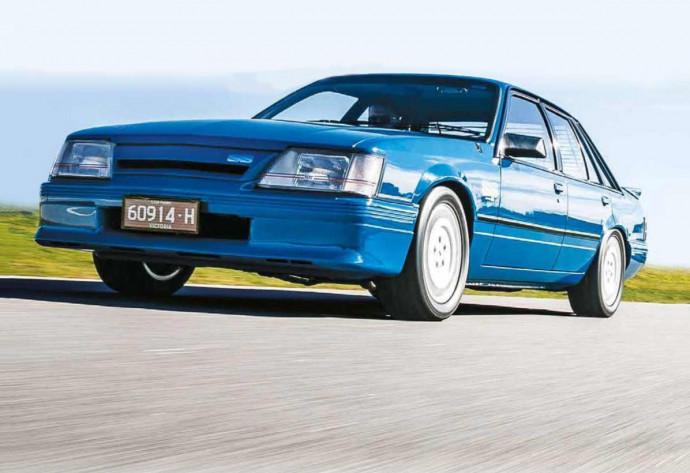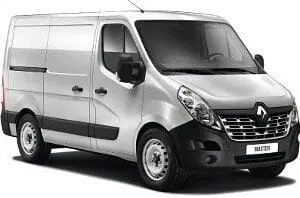
Used Holden Commodore Review: 1985
The name Peter Brock will always be synonymous with Holden. The late great racing driver cemented his relationship with Holden with a string of sensational racing victories in the 1970s, and he will forever be remembered as Holden's hero. Never has the bond between Brock and Holden been stronger than in the early 1980s, when Brock founded his own car company and produced a line of Holden Commodore-based road racing cars. There have been many excellent HDT-badged Commodores, but one of the greatest was the Bluey, a born to race Group A Commodore built to the new International Group A racing rules in 1985.
WATCH MODEL
In 1985, Australian passenger car racing replaced the homegrown rules in place since the early 1970s with a new formula developed in Europe. Local regulations moved car racing away from street racing, giving manufacturers wide freedom to modify their stock cars to fit the track, but new overseas regulations were more restrictive and they reintroduced the requirement to produce at least a limited series. cars for racing.
The VK SS Group A was the first of these so-called "homologation" special Holden vehicles built during the Group A era. It was based on Brock's Commodore HDT SS, itself based on the Commodore SL, the lightest model in the Holden line. They were all painted "Formula Blue", hence the nickname "Blueies" by Brock's enthusiasts, and featured a Brock-inspired "letterbox" grille and body kit mostly borrowed from previous Brock Commodore racers.
Inside, it had special blue trim, a full set of instruments, and a Mono leather steering wheel.
Under the Group A, suspension was set up similar to Brock's SS Group Three, with Bilstein gas struts and shocks, and SS springs. Like the regular SS, it had a 14mm rear sway bar, but had a much more massive 27mm bar up front.
The brakes were removed from the Brock SS Group Three and the wheels were made from 16×7" HDT alloy wheels wrapped in 225/50 Bridgestone Potenza rubber.
Under the hood was a specially modified 4.9-liter V8 Holden. Under Group A rules, the Commodore would have been heavily penalized due to excess weight had it raced with a standard size Holden V8, so the displacement was reduced from 5.044L to 4.987L by reducing the stroke to a squeak under the 5.0L engine. . limit.
The rest of the engine drew heavily from Holden's past racing experience and included cylinder heads modified by engine guru Ron Harrop, heavier L34 connecting rods, heavier Chev/L34 valve springs, Crane roller rocker arms, clumsy Crane camshaft, four-barrel Rochester carburetor, matched intakes and exhaust ports, double row timing chain, lightweight flywheel, HM manifolds and Lukey mufflers.
In total, it delivered 196kW at 5200rpm and 418Nm at 3600rpm, 19kW more than a conventional Holden V8 of the same torque. It was also a more revving engine, and Holden raised the redline by 1000 rpm over the standard engine's 5000 rpm limit. Complementing the new engine was a standard Holden M21 four-speed manual transmission.
The VK Group A tested at that time accelerated to 100 km/h in about seven seconds and covered a 400-meter sprint from a standstill in 15 seconds. It was fast for its time, handled and braked exceptionally well, and looked great with Brock's unmistakable presence on the road.
Under Group A rules, Holden had to produce 500 cars before they could race. They were built on the Holden production line and then shipped to Brock's Port Melbourne plant where they were completed.
IN THE SHOP
Beneath Brock's skin, this is Holden's commodore and is subject to the same problems as normal commodores. Under the hood, look for oil leaks around the engine and power steering. Inside, look for wear on the light blue trim as it doesn't wear well and check the dashboard for cracks and warping due to sun exposure. The good news is that most owners value their cars and take care of them accordingly. The most important thing is to make sure that this is a real Group A model, and not a fake.
IN ACCIDENT
Security was in its infancy when VK Group A launched, so it didn't have the systems that are now taken for granted. There were no airbags or ABS, and stability control was far from reality. In 1985, cars mostly lost body strength and crumple zones, and drivers had to rely on seat belts in crashes. But the VK Group A had decent, at least for the time, active safety with responsive handling and good-sized disc brakes.
IN THE PUMP
With a well-tuned V8 under the hood, the VK Group A will never save on fuel, but fuel economy is something few people care about. VK Group A is a sunny Sunday car, it is unlikely to be driven every day, so its owners are less worried about fuel consumption. It requires high octane fuel and unless it has been modified for unleaded gasoline it requires additives. Expect to see economy figures of 15-17 l/100 km, but it depends on driving style.
SEARCH
• Classic Australian muscle
• Brock, I think.
• Authenticity
• V8 performance
• Responsive handling
BOTTOM LINE
A magnificent classic Australian muscle car built by a true motorsports legend.
